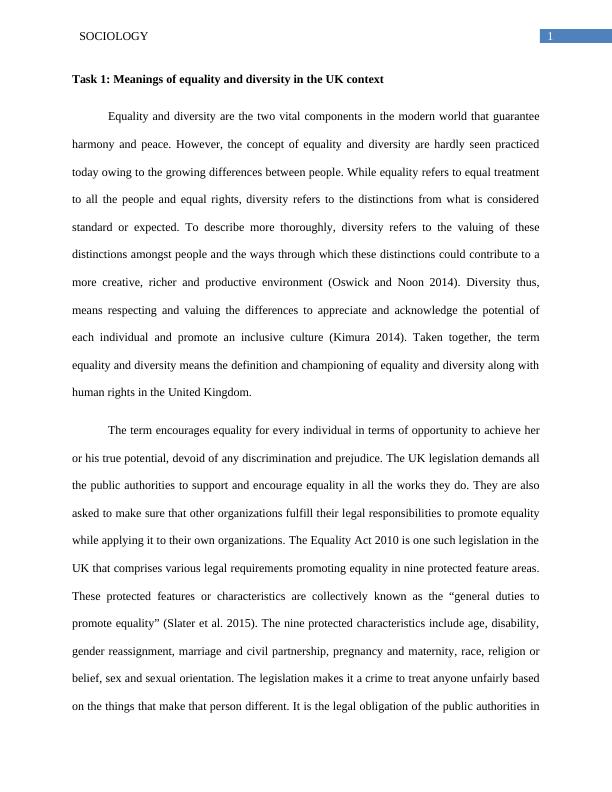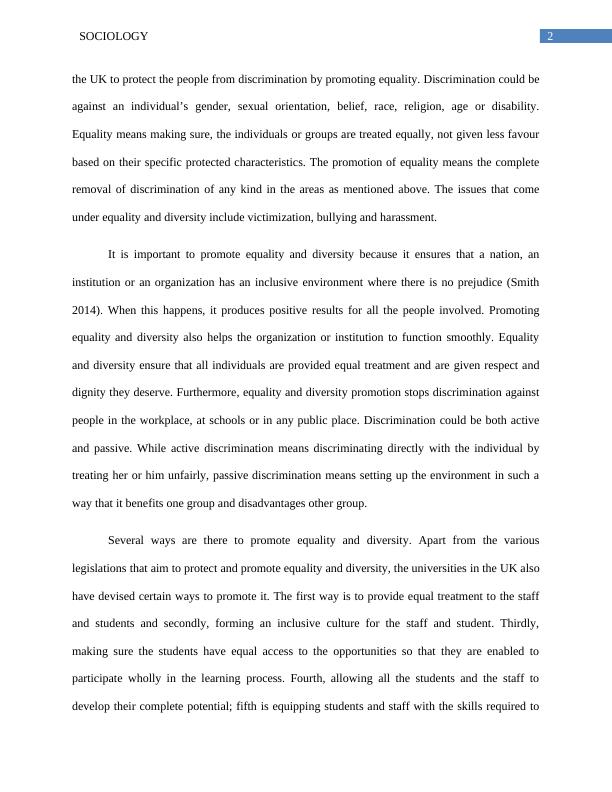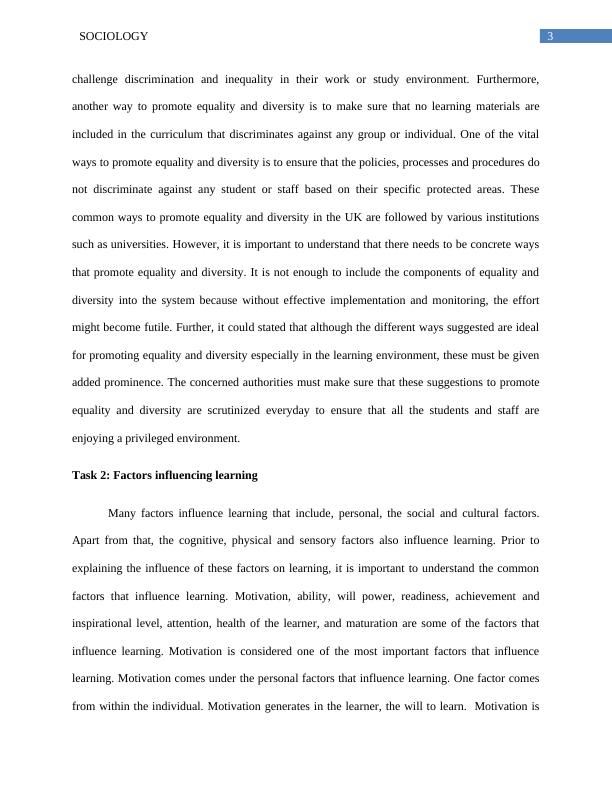Factors Influencing Learning
20 Pages5754 Words56 Views
Added on 2023-03-23
About This Document
This article discusses the various factors that influence learning, including personal, social, cultural, cognitive, physical, and sensory factors. It explores the importance of promoting equality and diversity in education and how discrimination can undermine the learning process. The article also highlights the policy and regulatory frameworks related to equality and diversity in the UK and the influence of these frameworks on organizational policies and practices. Additionally, it emphasizes the role of working with other agencies in promoting diversity.
Factors Influencing Learning
Added on 2023-03-23
ShareRelated Documents
End of preview
Want to access all the pages? Upload your documents or become a member.
Legislation in support of equality and diversity
|10
|2435
|235
Understanding Equality, Diversity, and Rights in Health and Social Care
|39
|11619
|342
Equality, Diversity and Inclusion in Health and Social Care
|10
|894
|39
The Project TABLE OF CONTENTS INTRODUCTION
|25
|7496
|408
Equality, Diversity and Inclusion: Understanding the Concepts and Importance
|5
|2314
|350
Equality, Diversity and Inclusion in Health and Social Care
|12
|955
|98




